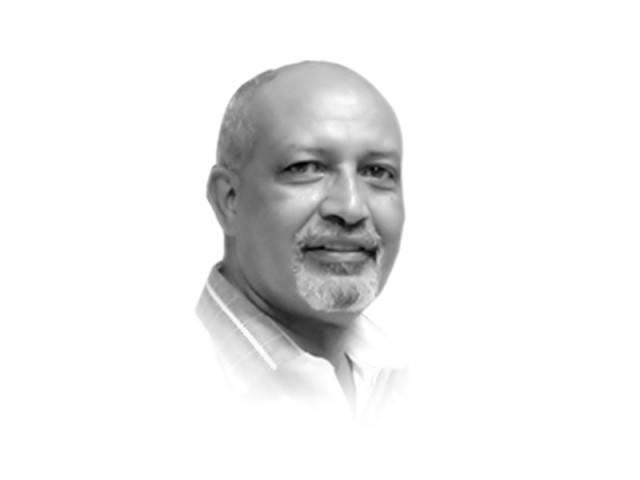
At a time when Pakistan was moving in the right direction towards complete polio eradication, security incidents followed by a series of incorrect media reports in various sections of the press — including an opinion piece published in this newspaper, “Polio campaign: was stoppage less dangerous than the vaccine” (January 24) — have seriously jeopardised the recent successes of Pakistan’s fight against polio.
Let it be clear that polio eradication has been achieved in all the countries globally, using the Oral Polio Vaccine (OPV), including a few developed countries that are currently using IPV (Inactivated Polio Vaccine). OPV was also used by the United States to achieve eradication.
The OPV is necessary for polio eradication as it induces high levels of mucosal immunity in the gut, which is needed to interrupt person-to-person transmission of poliovirus. IPV, on the other hand, protects only the individual. Over the past decade, more than 10 billion doses of OPV have been administered to more than 2.5 billion children worldwide. As a result, more than 10 million polio cases have been prevented. However, on extremely rare occasions, OPV may cause vaccine-associated polio paralysis (VAPP) in about 1 in 2.4 million doses administered (at the first dose). Can the world afford to have 2.4 million children paralysed against one child who remains protected? These are questions that public health officials have to answer.
Interestingly, Egypt, which has recently been infected by a Pakistani virus could not stop poliovirus transmission in 1990 using the IPV and had to revert back to OPV to successfully interrupt poliovirus transmission.
Most importantly, the above-mentioned information is easily available in the public domain, on www.polioeradication.org.
IPV is another type of vaccine, which is used when countries become polio-free and are safe from importations. Regions and countries that have eradicated polio shifted to IPV, but whenever there has been an active polio outbreak, even in a polio-free country, many of them immediately revert back to OPV for halting virus circulation.
China is a living example of an industrialised country which has used OPV to stop polio transmission in 2011 after reintroduction of the poliovirus from Pakistan.
Children who live in areas with poor water and sanitation and very poor immunisation coverage are more vulnerable to poliovirus infection and other communicable diseases. However, only OPV can interrupt poliovirus transmission by providing immunity to children.
According to an estimate, polio teams in Pakistan regularly miss over 500,000 children during every national polio round, which is the biggest reason why Pakistan is finding it relatively difficult to stand in the row of polio-free nations. China, for example, managed to eradicate polio by conducting four immunisation rounds per year only. It achieved this success by not missing out a single child during these rounds. The missed children are a source for the poliovirus to continue its circulation. Moreover, the same children are highly vulnerable to the paralysis.
Global polio eradication history has proved that whenever vaccination was impeded, cases have dramatically gone up. This explains what happened in Nigeria from 2003-4 when thousands of children resulted in being paralyzed for life, followed by almost twenty more countries across the globe getting reinfected by the Nigerian outbreak. Similarly, Swat, in Khyber-Pakhtunkhwa had an explosion of polio cases in 2009, when children were deprived of vital Oral Polio Vaccine. This clearly means that the problem is not with the vaccine, but with low vaccination coverage and repeatedly missed children. Simply stated, if a population is fully immunised, they will be protected against the poliovirus.
Likewise, the current measles outbreak that resulted in hundreds of children dying across the country is due mainly to the unvaccinated status of these children.
Technically speaking, having a higher proportion of polio cases among vaccinated children is a sign that the country is nearing stoppage of poliovirus transmission and not that it is failing its fight against the poliovirus. Let me explain why. All the wild poliovirus cases in Pakistan, for over a decade, were labelled as polio-based on isolation of ‘wild poliovirus’ in their stool specimens. Secondly, the phenomenon of having polio cases among some vaccinated children is scientifically known and has been happening globally. India, the last country to be eliminated from the list of endemic countries, had 80 per cent polio cases in 2009 and 63 per cent in 2010 that had received more than seven OPV doses. They managed to stop polio transmission in 2011.
No drug or vaccine in the world is 100 per cent efficacious, with zero side effects. OPV is one of the safest vaccines ever produced and is used globally. OPV use has slashed the number of polio cases in Pakistan by 70 per cent during the last year.
Despite having made some progress, Pakistan is still at a serious risk of resurgence of polio if quality vaccination activities are not conducted using the viable oral polio vaccine. Unnecessarily raising questions about the vaccine will seriously divert attention from the main focus, hence further depriving the innocent children of Pakistan from preventable lifelong paralysis. All of us — as parents, as members of the community, civil society, notables and influential — have a moral obligation towards the children of Pakistan. Let us all play our role to kick the menace out of the country; just as the other countries have done.
Published in The Express Tribune, January 25th, 2013.













COMMENTS
Comments are moderated and generally will be posted if they are on-topic and not abusive.
For more information, please see our Comments FAQ